If you’ve never seen haskap before, this whole article is going to seem very strange to you. So before I go and tell you what haskap is, let me show you what haskap looks like.
What is Haskap?
Haskap is an amazingly hardy, fast growing, high yielding, great tasting berry bush that is relatively new to North America. It is an edible honeysuckle that originates from Siberia and can be found in Russia, China, and Japan. It goes by the name ‘Honeyberries’, ‘Blue Honeysuckle’, and ‘Haskap’. Recently, it has been developed at the University of Saskatchewan by Dr. Bob Bors for commercial production.
What makes Haskap so remarkable?
Haskap has several features that make it stand out from among all other fruits.
#1. Hardiness
Coming from Siberia, it is extremely hardy. It can withstand winter temperatures of -47° Celsius. Not only that, but its open flowers can endure -7° Celsius. They are the earliest to fruit in the season, usually in mid to late June – even earlier than strawberries.
#2. Early & High Yield
One of the greatest thing about Haskap is that it doesn’t take seven years to start producing. My seedlings were planted in the spring of 2006 and I ate my first fruit in June 2007. In the studies at the University of Saskatchewan, they were yielding 1 kg (2.2 lbs.) per plant in their 3rd year and 4 kg per plant in their 6th year. The picture below is a three-year old plant in the test patch at the University of Saskatchewan.
#3. Unique Flavor
Haskap is unlike any other fruit you’ve tried. Some have compared it’s taste to blueberries, raspberries, blackberries, rhubarb, saskatoons, and black current. The flavor seems to vary with varieties. They are most often compared with blueberries, but without the seeds. The seeds are similar to that of kiwis, so you don’t even notice them. As for it’s uses, basically anything you would do with blueberries, you could also do with haskap – eat them fresh, in baking, as jams & jellies, frozen, or whatever else you may think of.
You can learn more about Haskap by visiting these sites:
Or you can buy Haskap plants from DNA Gardens in Elnora, Alberta.
Edited: June 1, 2008
Read more in my post Haskap Blossoms In May or Early Haskap Berries.
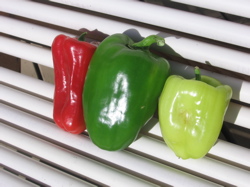 Before two years ago, I had no idea that you could grow peppers in Alberta. I figured they were exclusively a Mexican food or something grown down in Chile. But, lo and behold, Alberta actually grows acres and acres of the things! Who knew? So last spring I tried to grow some seedlings I bought at the grocery store. They were somewhat successful, yielding a handful of hot, skinny yellow peppers.
Before two years ago, I had no idea that you could grow peppers in Alberta. I figured they were exclusively a Mexican food or something grown down in Chile. But, lo and behold, Alberta actually grows acres and acres of the things! Who knew? So last spring I tried to grow some seedlings I bought at the grocery store. They were somewhat successful, yielding a handful of hot, skinny yellow peppers.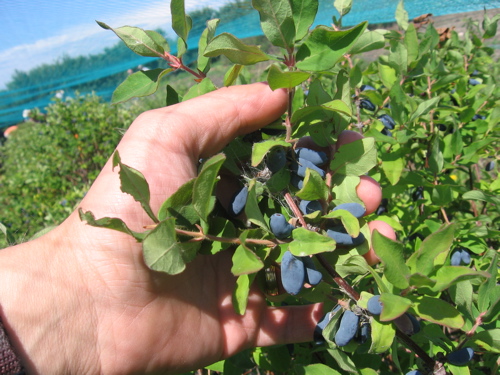
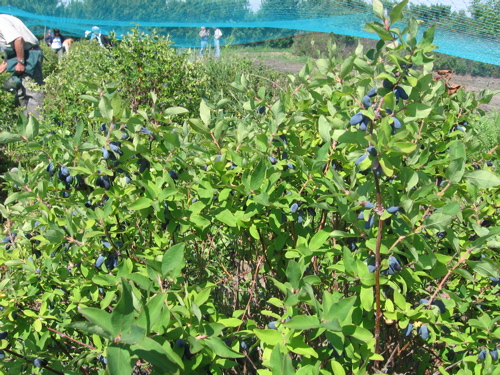
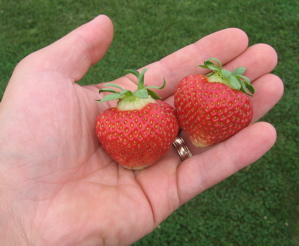 This spring I expanded my strawberry patch. In the past all I had grown was the popular June-bearing Kent strawberry, but this year I wanted to try something different. I ordered my strawberry plants from
This spring I expanded my strawberry patch. In the past all I had grown was the popular June-bearing Kent strawberry, but this year I wanted to try something different. I ordered my strawberry plants from 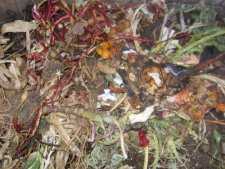 Who knew that throwing all your dead plants, moldy vegetables, and manure from your pet pig in a big pile to let them rot, and then growing your own food in that stuff would be a great idea? Go figure, eh? But that pile of mushy tomatoes and wilty carrots is one of the best things you can do for your garden. Full of the very things your plants need to thrive, compost is a gardener’s black gold.That’s why I decided I needed a compost pile. After all, I had the space, I had the ingredients, and I had the motive – why not make my own compost? After all, how hard could it be?
Who knew that throwing all your dead plants, moldy vegetables, and manure from your pet pig in a big pile to let them rot, and then growing your own food in that stuff would be a great idea? Go figure, eh? But that pile of mushy tomatoes and wilty carrots is one of the best things you can do for your garden. Full of the very things your plants need to thrive, compost is a gardener’s black gold.That’s why I decided I needed a compost pile. After all, I had the space, I had the ingredients, and I had the motive – why not make my own compost? After all, how hard could it be?  I grew up on a farm in central Alberta and naturally, we had a large garden in order to feed all of us (Mom, Dad, and the four boys). That means every year we helped Mom & Dad plant, weed, and harvest the garden. But it’s a world of difference between helping your folks pull some weeds and going out and making a beautiful yard of your own. Now that I’m grown and have a family and yard of my own, I’m discovering all the things I didn’t learn. That’s where this blog comes in.
I grew up on a farm in central Alberta and naturally, we had a large garden in order to feed all of us (Mom, Dad, and the four boys). That means every year we helped Mom & Dad plant, weed, and harvest the garden. But it’s a world of difference between helping your folks pull some weeds and going out and making a beautiful yard of your own. Now that I’m grown and have a family and yard of my own, I’m discovering all the things I didn’t learn. That’s where this blog comes in.